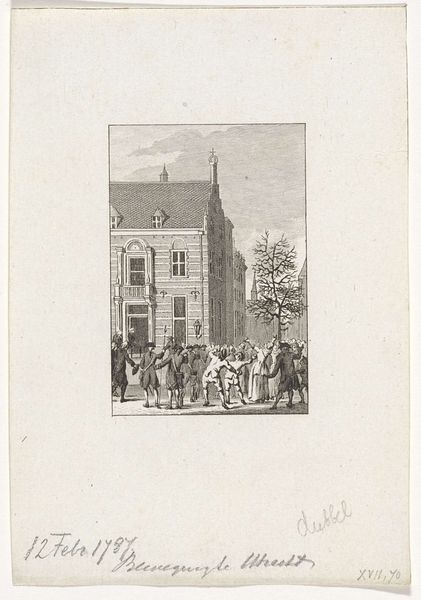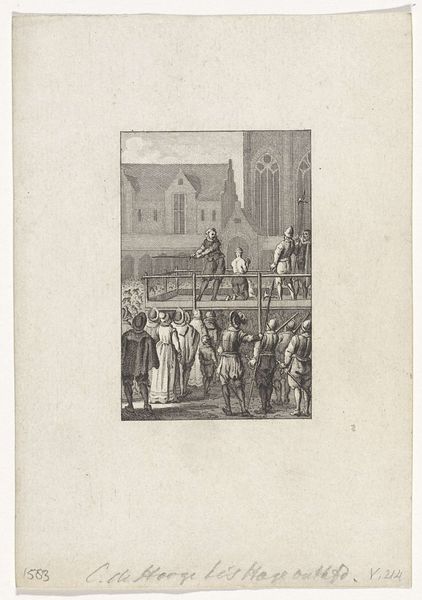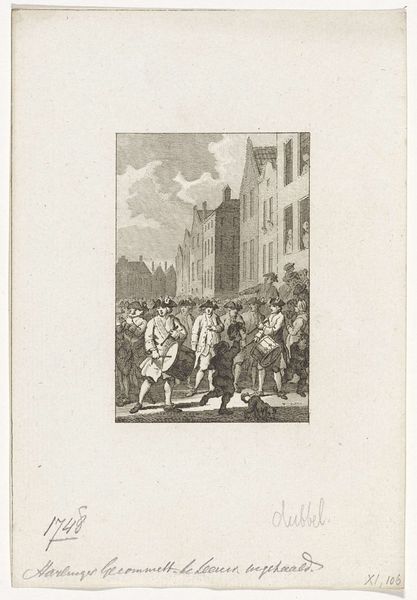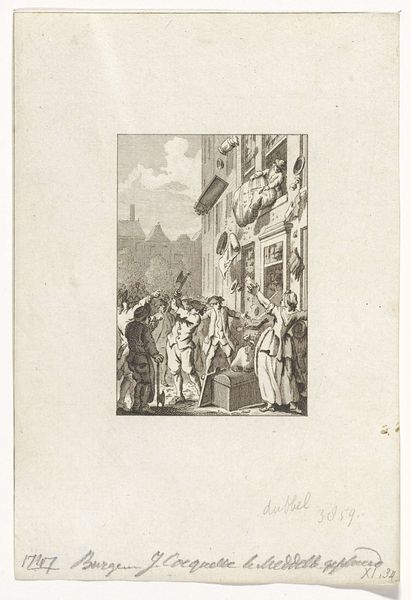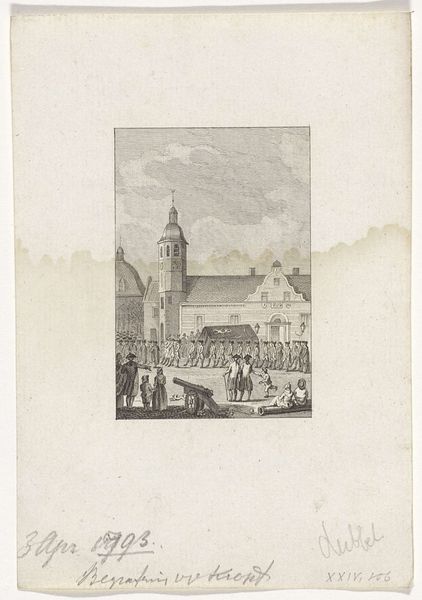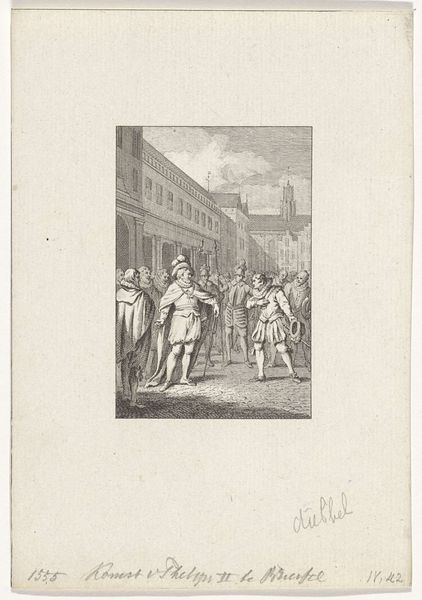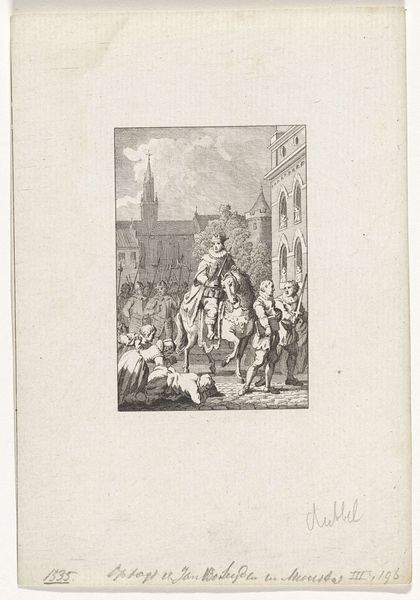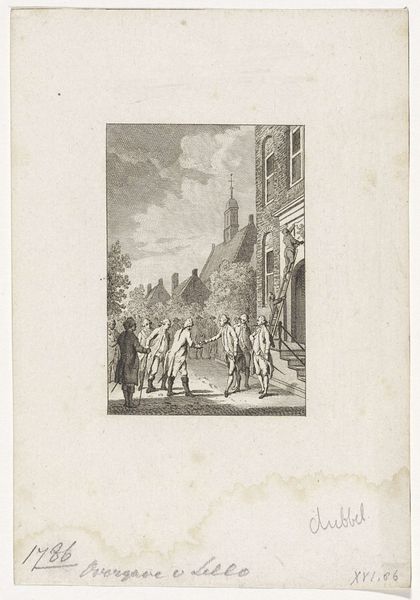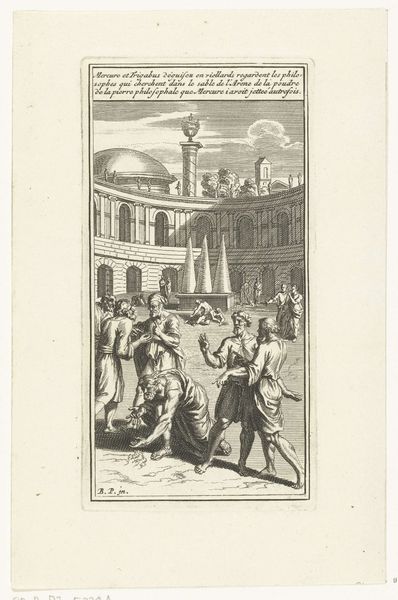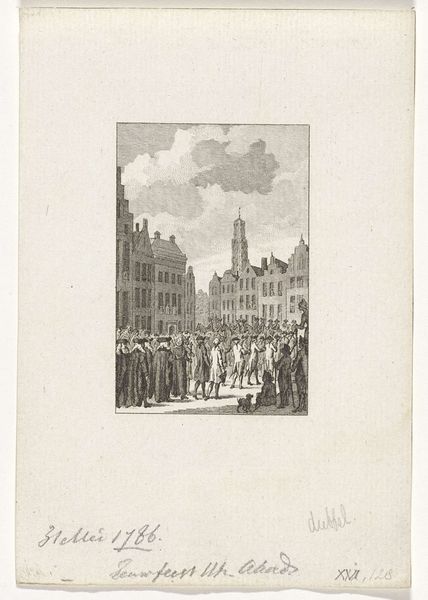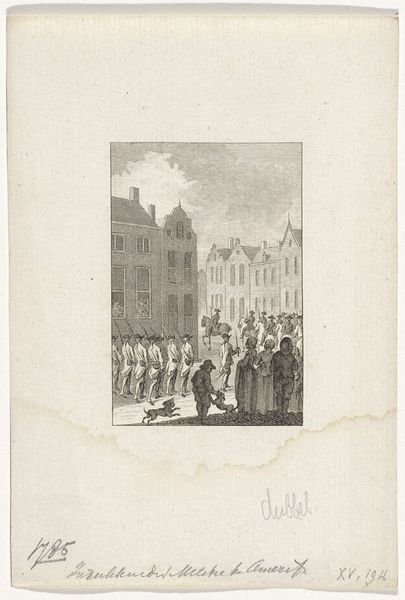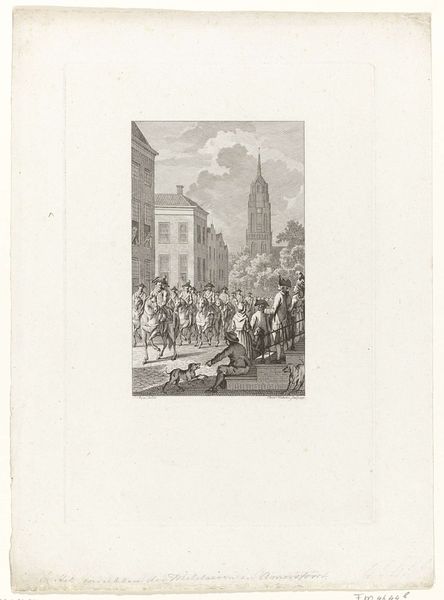
print, engraving
#
neoclacissism
# print
#
cityscape
#
genre-painting
#
history-painting
#
engraving
Dimensions: height 241 mm, width 157 mm
Copyright: Rijks Museum: Open Domain
Editor: This is "Verbranding van een pamflet te Haarlem, 1790," or "Burning of a Pamphlet in Haarlem, 1790," a print made in 1799 by Reinier Vinkeles. The scene depicts a crowd gathered before an ornate building, observing someone burning a paper from a balcony. The composition strikes me as quite balanced, with the building acting as a strong visual anchor. What are your initial observations? Curator: The visual tension is certainly palpable, isn't it? Note how the artist structures the scene, drawing the eye upwards from the assembled crowd to the figures on the balcony. Vinkeles manipulates light and shadow, rendering textures and suggesting depth with delicate precision through the engraving technique. Editor: The perspective seems very exact; could we talk about this? Curator: Observe the Neoclassical architectural features in the backdrop. This period of architectural aesthetic influence prized symmetry and clear geometric form in its articulation of public space and structures. This lends to a kind of rigid order, which in a way reflects the act of condemnation performed on the balcony. How do you view the arrangement of the human figures in the crowd, from foreground to background? Editor: They're quite tightly packed together. There seems to be much contrast between light and shadows across the crowd; maybe it emphasizes a mix of different reactions within the gathering. Is the composition implying tension, anticipation or dissent within the people attending the public spectacle? Curator: Precisely! The tight compression enhances the visual field with a dynamic quality while leading one to reflect on questions about space and the relations of the people to each other. Also the print uses subtle gradations to define its formal spatial aspects. The play between architectural monumentality and the transient actions of people below offers, in my view, a fascinating juxtaposition of stability and change. Editor: Thanks for shedding light on these subtle details. It seems like looking at art through a Formalist lens really encourages you to see the relations and feelings the composition has from the visual components!
Comments
No comments
Be the first to comment and join the conversation on the ultimate creative platform.

